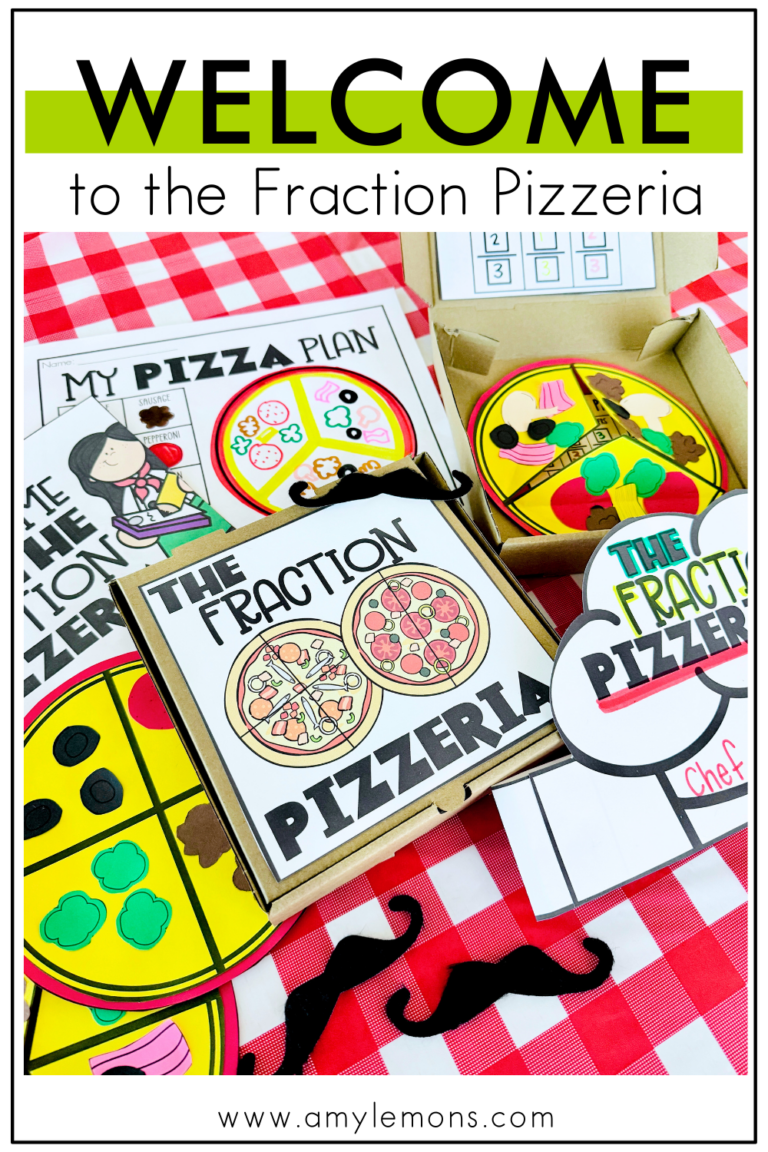
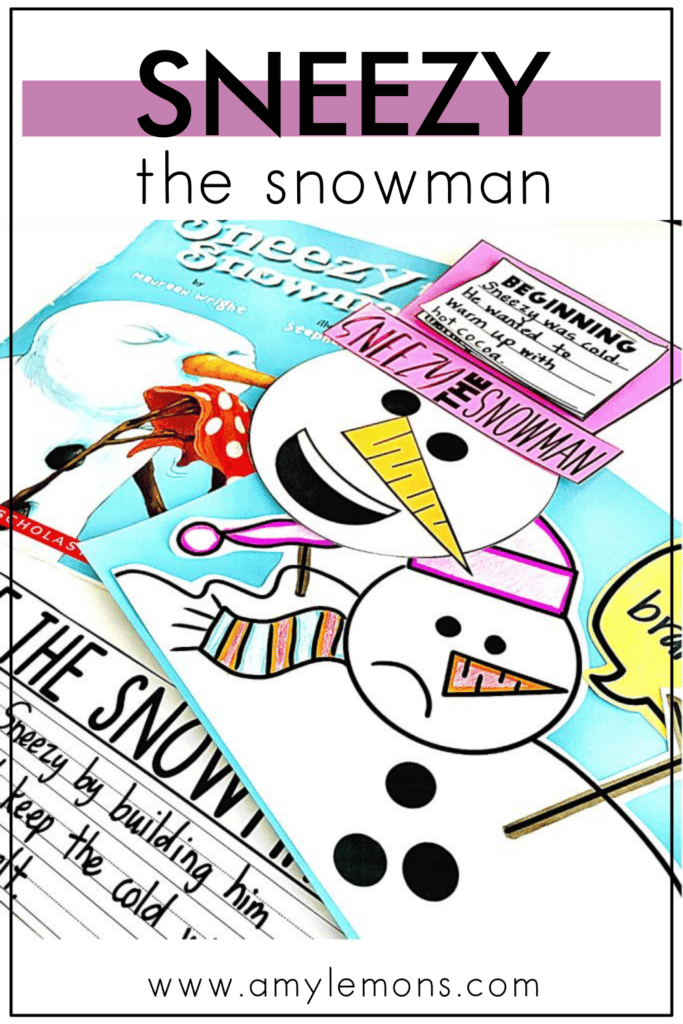
Have you ever read Sneezy the Snowman by Maureen Wright? It’s a story that your students will most definitely enjoy. Sneezy the snowman is just way too cold, but every time he warms up… he melts! Oh no! No worries, the children are always right by his side to put him back together again. Will Sneezy learn how to stay warm without melting? You’ll have to read to see!
{Click HERE to learn more about this Sneezy the Snowman teaching resource}
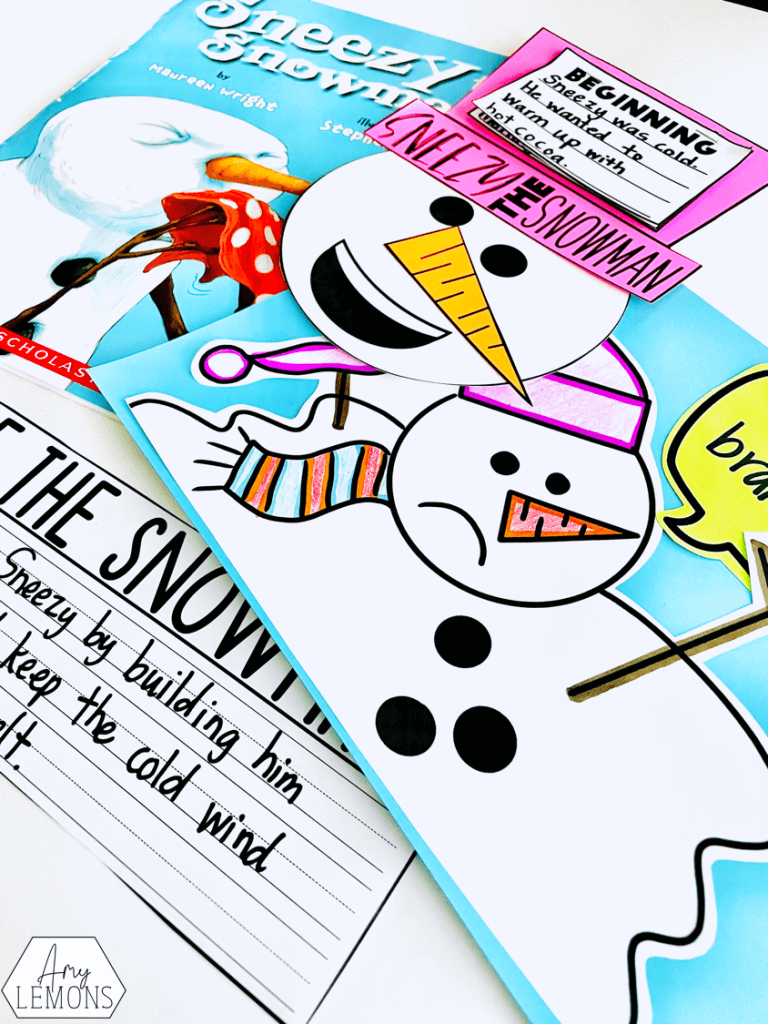
This book is a great read aloud to model fluency and expression. Pull out all of those dramatic voices, and have fun as you are reading the story aloud with your students. It has a great rhythmic flow and rhyming words that make it even more engaging.
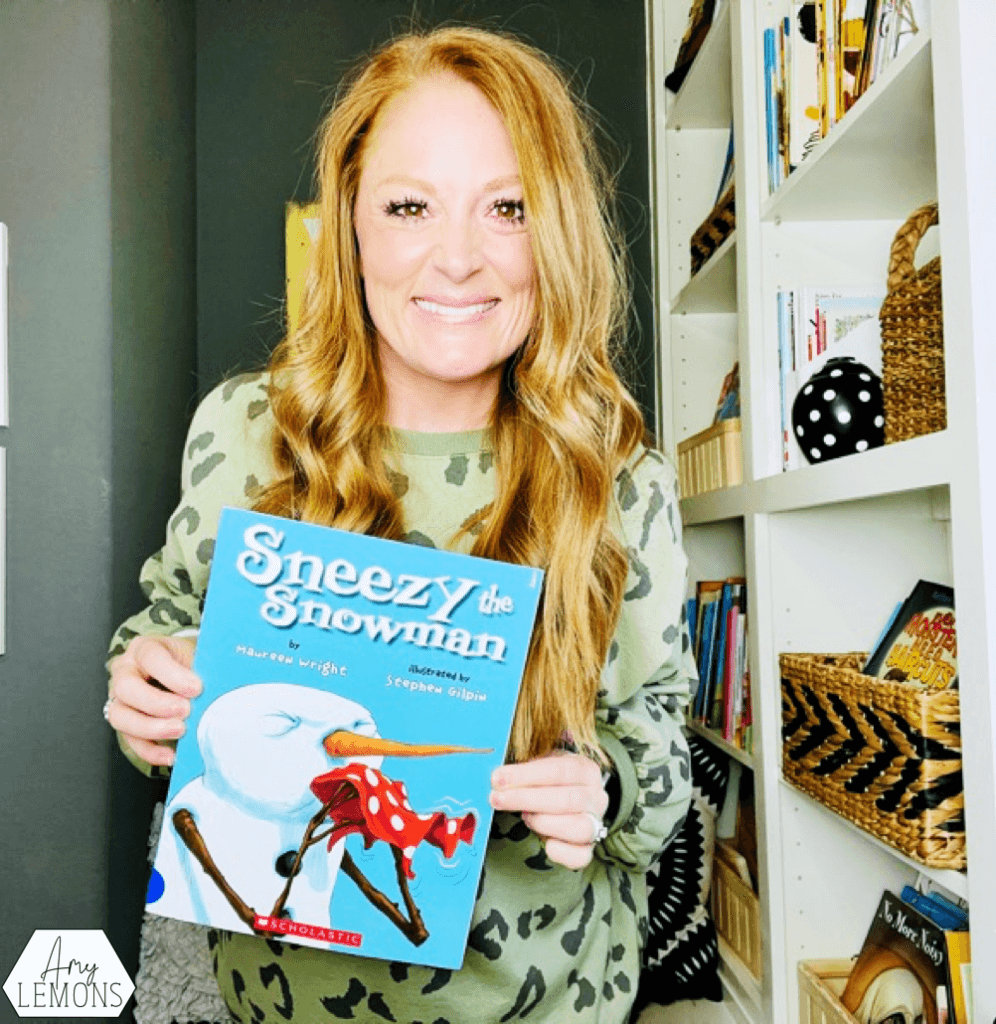
There are several comprehension skills that you can focus on while reading Sneezy the Snowman. One of the reading skills we like to practice is retelling a story. You can do this with the Beginning, Middle, and End strategy or the Somebody, Wanted, But, So, Then strategy. Either one fits perfectly with this book!
We created Sneezy and then did a BME story retell on his hat. It goes something like this:
In the beginning, Sneezy was cold. He warmed up with hot cocoa. In the middle, the kids kept having to remake Sneezy because he kept on melting. In the end, Sneezy was too hot. The children took him to get ice cream and he was just right!
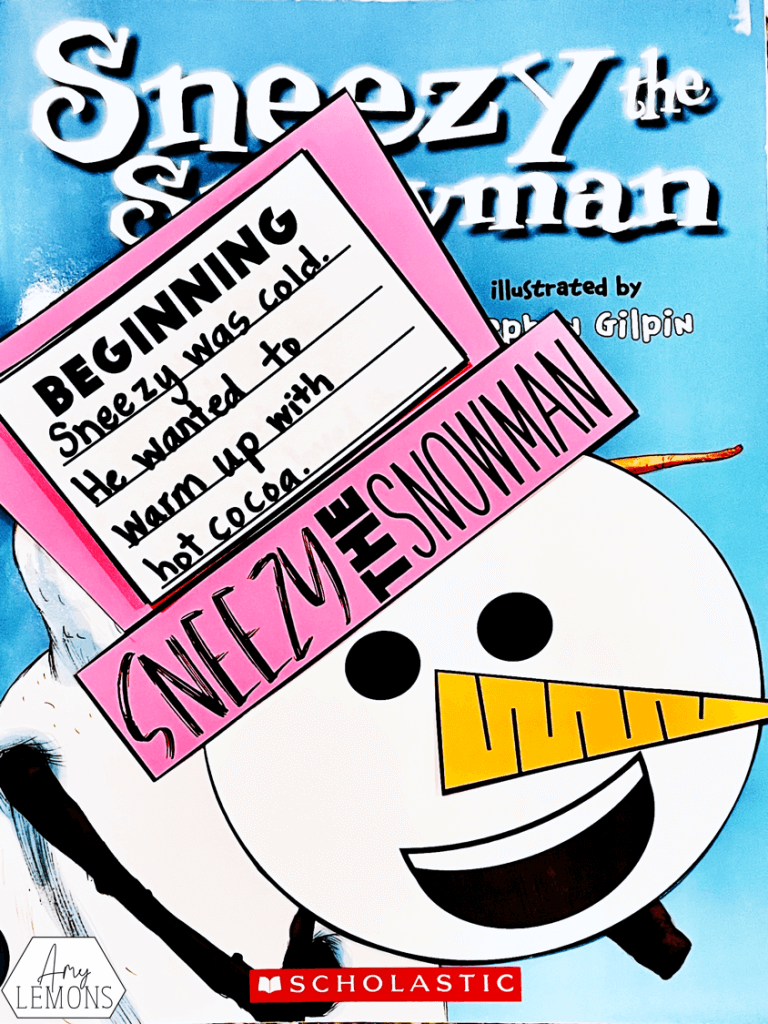
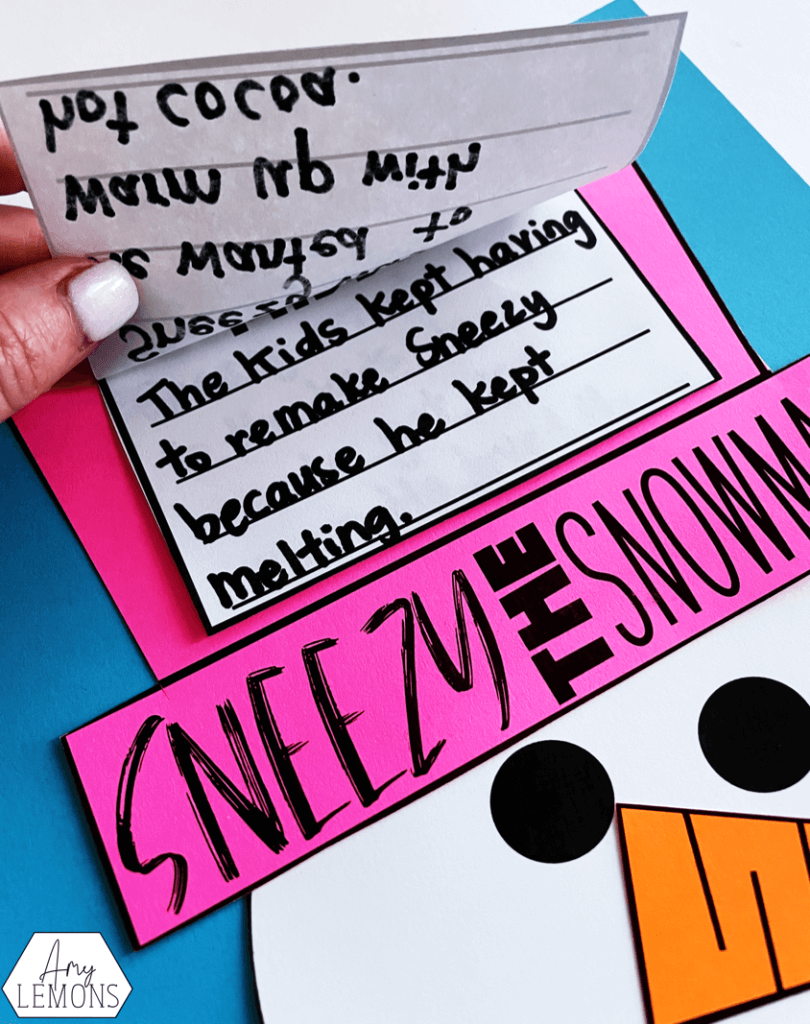
If you’d like to use the Somebody, Wanted, But, So, Then strategy with this story, I have a printable for you! Just enter your info in the boxes below!
Another comprehension skill we like to focus on is Cause and Effect. Cause and Effect is very important in this story because the kids in the book are constantly having to adjust when Sneezy causes himself to melt. We see a cyclical style of a story in Sneezy the Snowman because very similar things keep happening over and over again. This lends itself to the structure of how Sneezy the Snowman was written.
With this anchor chart, as a class discuss the different events in the story. Students brainstorm the cause and effect scenarios from the story. This shows students the structure of the story.
To go along with this lesson, students complete a directed drawing of a melted Sneezy.
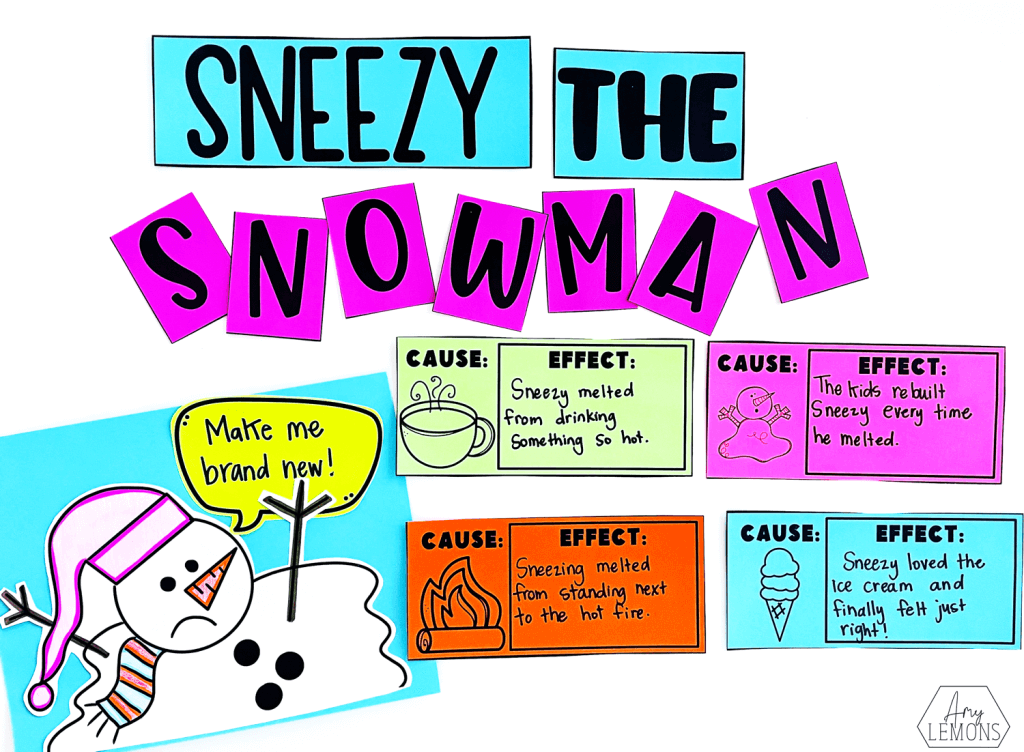
Now let’s take a look at vocabulary. While we always introduce and discuss the words and their definitions, we also like for students to utilize and understand the words and their meanings. These vocabulary writing prompts give students the opportunity to dig a little deeper with the new words.
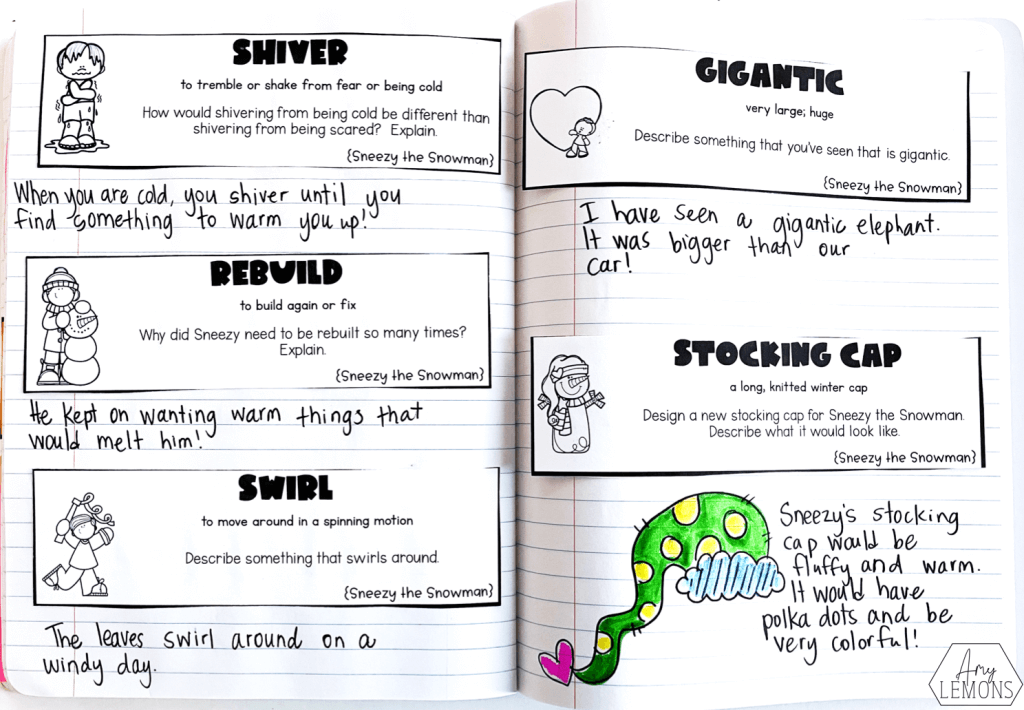
We never want to miss an opportunity to connection fiction and nonfiction. Giving students ample exposure to nonfiction stories allows them to make connections, locate and retell facts, distinguish fiction from nonfiction, and so much more. With Sneezy the Snowman, we wanted students to learn about winter weather from 6 different locations in the United States.
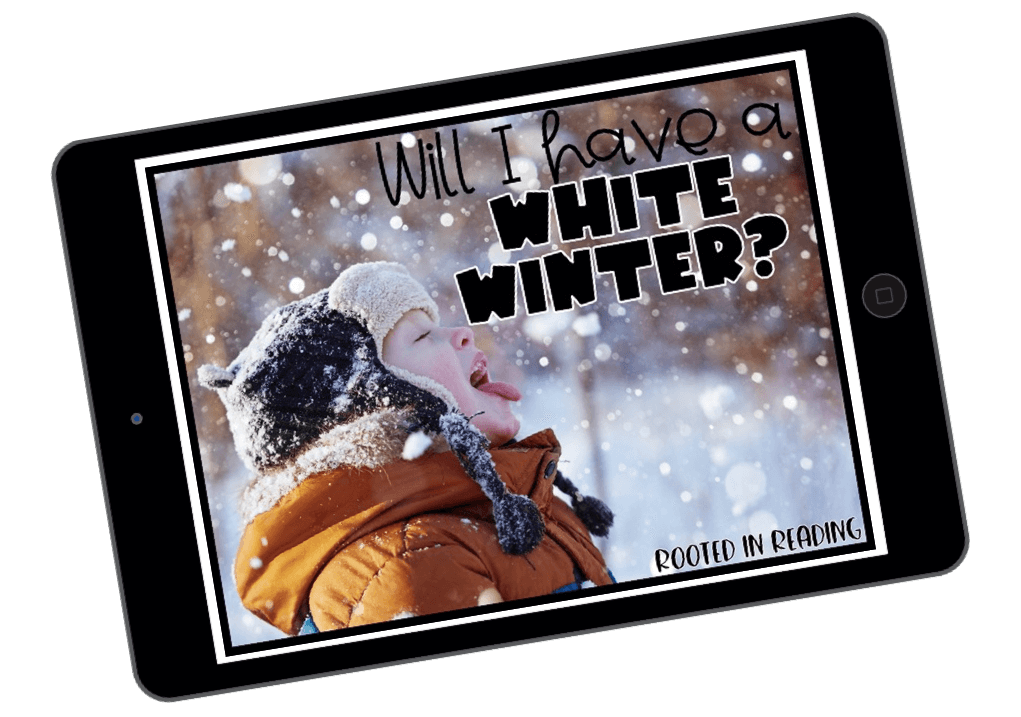
The Nonfiction Reader, Will I Have a White Winter?, gives information about winter weather in Phoenix, Boston, Miami, Dallas, Seattle, and Chicago. Students will learn that winter looks a lot differently across our country depending on where you are located!
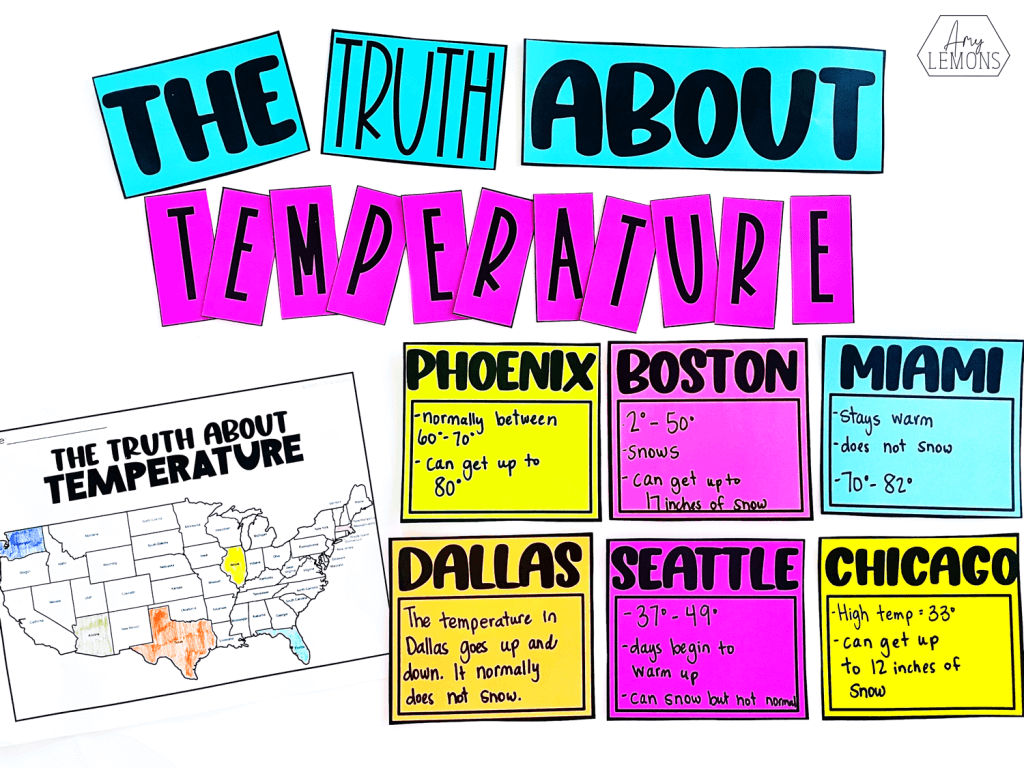
Students are able to find the six locations discussed in the nonfiction reader as well as record new information learned. As you are creating your class anchor chart, students are jotting down winter weather information about each city mentioned in the story. This printable could also be used as note-taking practice as you are reading the informational text.
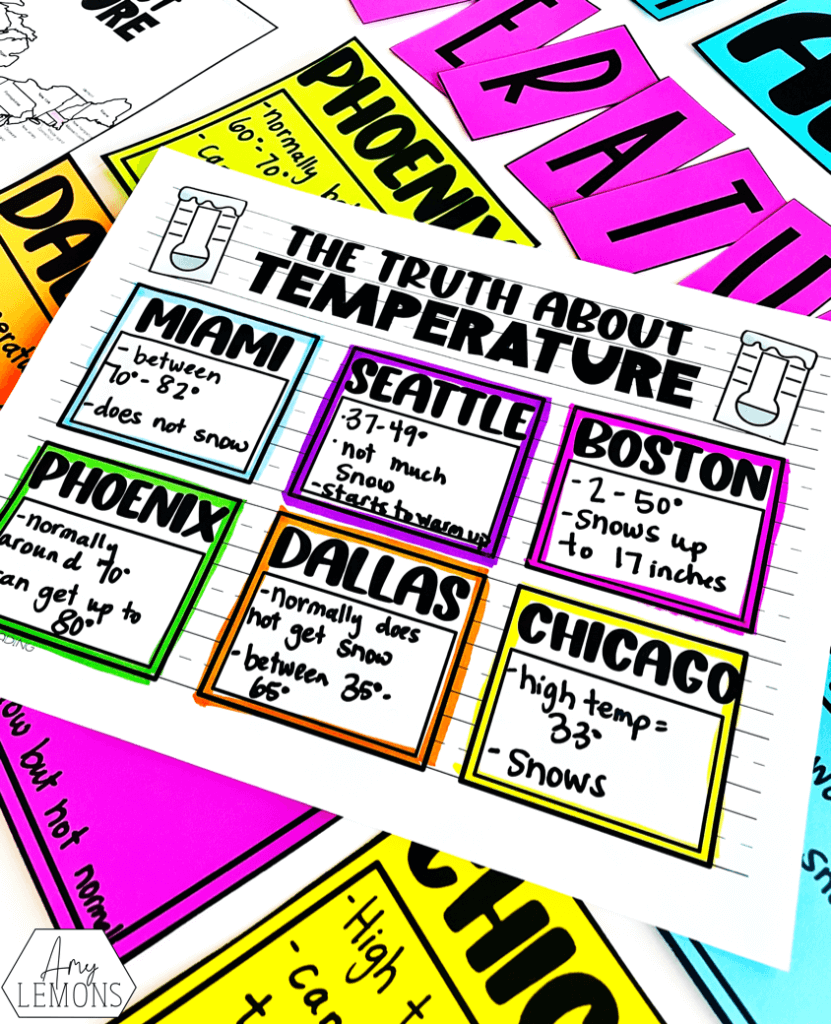
We hope you love reading Sneezy the Snowman in your classroom! Pin the image to your Pinterest Boards to save for later!

{Amazon Affiliate links were used in this post}

Hey, y’all! My name is Amy Lemons and I am passionate about providing students with both engaging and effective standards-based Math and ELA lessons.
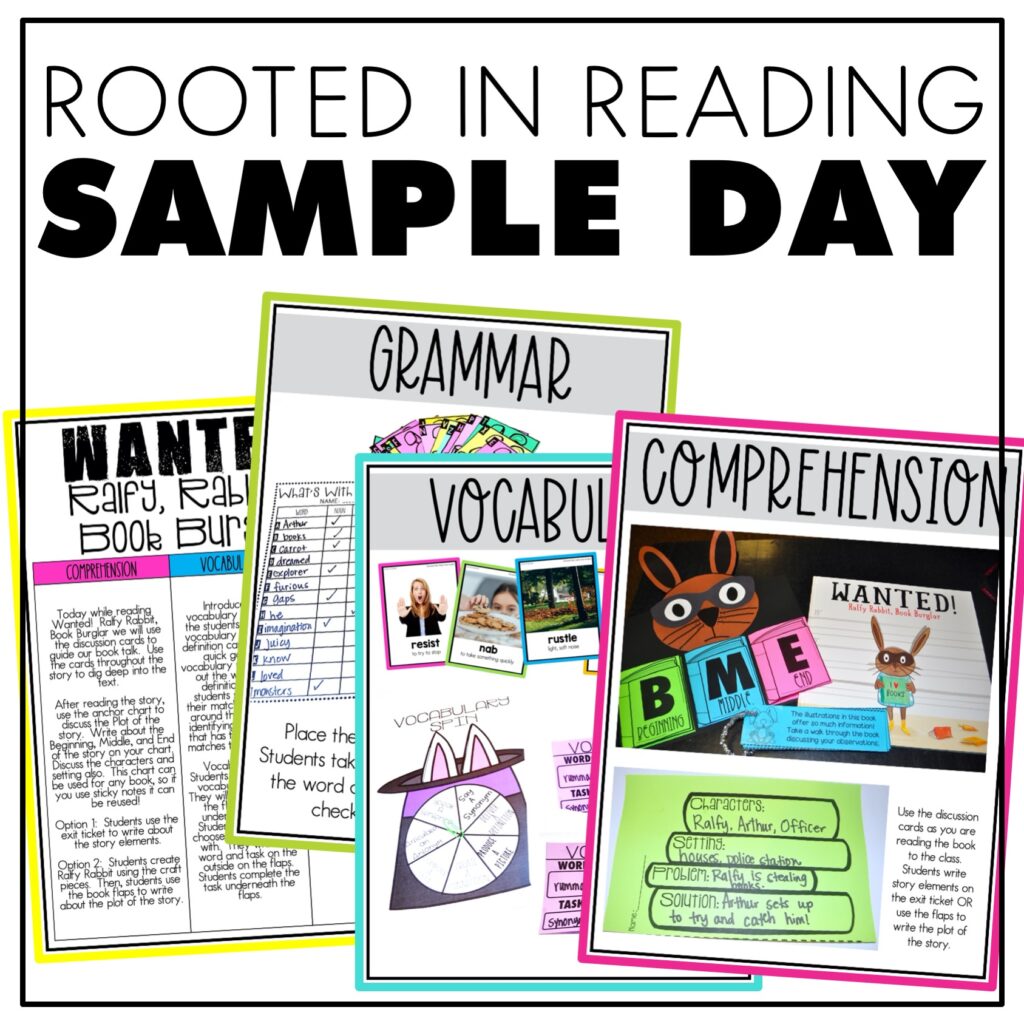
Sample a day of Rooted in Reading with these lesson plans and activities for Reading Comprehension, Vocabulary, and Grammar!